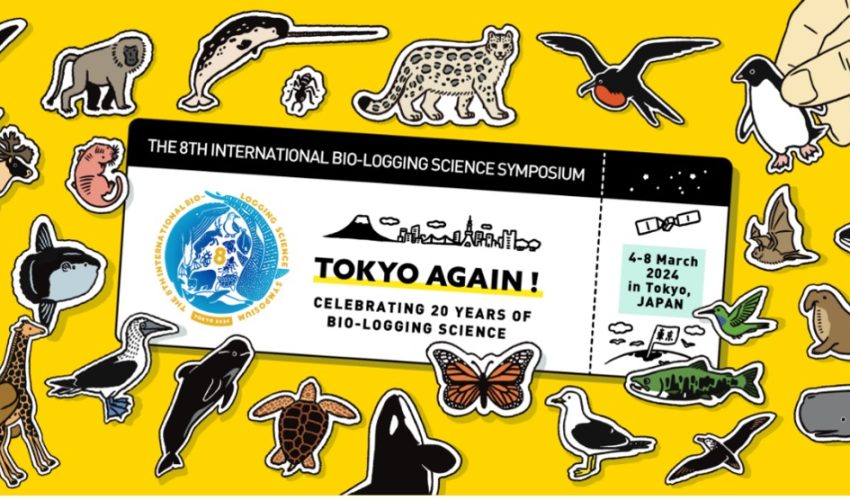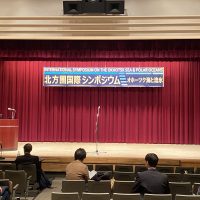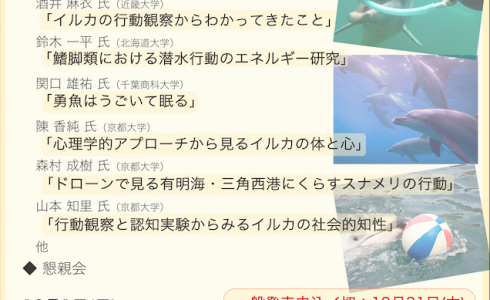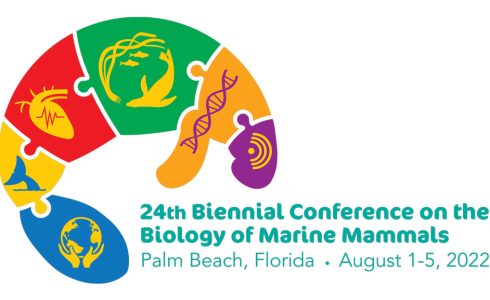D3のLさんが3月に開催された国際バイオロギングシンポジウムについて報告してくれました!
ーーーーーーーーーーーーーーーーー
D3のLです。
I participated and gave a poster presentation at the 8th International Bio-logging Science Symposium between 4th and 8th March.

One of the onsite poster venues in Yayoi campus of the university of Tokyo
At the symposium, I presented the results of winter movement and behavioral patterns of five rehabilitated spotted seals tracked from the southern Sea of Okhotsk.
Spotted seals are known as ice-associated seals, and they haul on seasonal sea ice each winter and spring to perform annual cycles of reproduction and molting. From early spring, pregnant females give birth on sea ice and nurse their pups for 2~3 weeks. Newborn pups are dependent upon sea ice and seldom enter the water until they are weaned and molted. Living on sea ice make it difficult to observe the movement and ice-related behaviors of spotted seals directly. Meanwhile, out of concern for the influence of abnormally earlier ice disintegration on the mortality of seal pups and the quality of ice habitats, we deployed satellite tags on rehabilitated seals to answer the questions on why, where, and how spotted seals use sea ice. Another significance of this study is to assess seal rehabilitation success properly; to do so, information about behaviors and subsequent fate of released seals is needed.
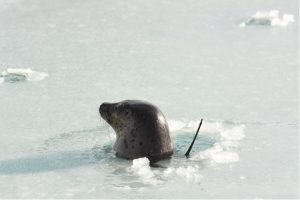
Spotted seal deployed with satellite tag before releasing
The seals we tracked were from the Okhotsk Tokkari Center, the only seal protection facility in Japan, and started to rescue, rehabilitate, and release stranded seal pups in 1999.
From the satellite tag, we were able to chart the migration route of each individual, view the time spent on various activity events (e.g., diving, haul-out), and have an insight into general diving behaviors. The preliminary results showed that diving events increased after one week of release, indicating that rehabilitated juvenile seals tend to explore more after gradually adapting to the local environments. The time spent on haul-out events became longer with the sea ice approaching, as rehabilitated seals may follow the ice-associated life history events and start to molt on sea ice. Tracking duration and migration route had individual variations, and more detailed information about rehabilitated seals is available in previous blogs. I am still working on the tracking data to fully determine spotted seal ice-related habitat use and their behavioral characteristics. Hope to share more about our findings in the coming soon future 🙂
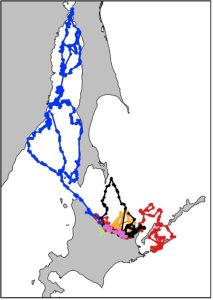
Tracking map of five rehabilitated juvenile spotted seals
I started to get interested in bio-logging science during my undergraduate studies; it is always exciting to uncover the hidden life of marine mammals with the aid of satellite tags, especially those species that conduct long migrations. Meeting and talking with the pioneer, senior, and young researchers in bio-logging science was a fabulous experience for me.
During the one-week symposium, I witnessed the power of animal-attached electronic tags in various fields and the development of new devices. Meanwhile, the combination of artificial intelligence and bio-logging science broadened my perceptions and is expected to give researchers access to diverse unknown questions about specific species. In addition, I was also inspired by other researchers’ work through communication and their presentations. Although I missed the BLS7 in Hawaii, it is fortunate to join the BLS8 this year, where it was first launched. As a participant, I am thankful for all the volunteers and related members who contributed a lot to make the symposium successfully held.
The BLS8 was a beautiful memory and I look forward to presenting my future work three years later at the BLS9!
Relevant Links:
- Previous blog of tracking report of rehabilitated seal
https://hokkaidocean.sakura.ne.jp/2022/12/28/rep-29/
- Tokkaricenter official Ins

